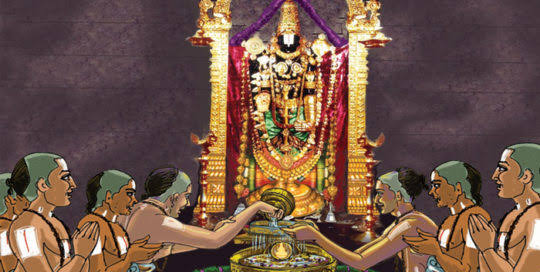
On Aarti "Jaya Jagadish Hare"
The famous aartī, "Jaya Jagadish Hare" is composed by Pandit Shardha Ram Phillauri.
It is said to have been composed as a Universal aartī by the author. The popular imagination phenomenon might have made it limited to Lord Vishnu. 1/n
The famous aartī, "Jaya Jagadish Hare" is composed by Pandit Shardha Ram Phillauri.
It is said to have been composed as a Universal aartī by the author. The popular imagination phenomenon might have made it limited to Lord Vishnu. 1/n

The aarti made its first raw cinematic appearance in a song from the 1952 movie, Anand Math.
In here, the Govinda damodar Stotram of Sri Bilva Mangala Thakura is adapted with the 'Jai Jagdish Hare' refrain.

In here, the Govinda damodar Stotram of Sri Bilva Mangala Thakura is adapted with the 'Jai Jagdish Hare' refrain.

The rendition of the written aarti reaches its zenith in a later 1970 movie, Purab Aur Paschim. The protrayed song in the movie, playing background of the aartī, beautifully portrays the devotion towards the Radha-Krishna. 

This prayer symbolizes the continuity of the Indian tradition before and after India's independence. at this point of time the song was becoming a favorite aarti staple across India.
The aartī's various variations employing same background tune and structure, are used for specific deities such as in: Om Jai Shiv omkara, Om Jai Lakshmi mata, Om Jai Ambe gauri, Om Jai Adya Shakti, Om Jai Saraswati Mata, Om Jai Gange Mata, et al..
There are two point of view,
It's not written for Vishnu, but the general Almighty.
..तुम पूरण परमात्मा, तुम अन्तर्यामी,
पारब्रह्म परमेश्वर, तुम सब के स्वामी ॥.....
...Tuma pūraṇa paramātmā, tuma antaryāmī,
PāraBrahma parameśvara, tuma sabkē svāmī ॥...
It's not written for Vishnu, but the general Almighty.
..तुम पूरण परमात्मा, तुम अन्तर्यामी,
पारब्रह्म परमेश्वर, तुम सब के स्वामी ॥.....
...Tuma pūraṇa paramātmā, tuma antaryāmī,
PāraBrahma parameśvara, tuma sabkē svāmī ॥...
second, It's indeed written for Vishnu.
For example, lets see two lines in the aartī
तुम करुणा के सागर, तुम पालनकर्ता,...
Tuma karuṇā ke sāgara, tuma PālanaKartā...
Further,
दीन-बन्धु दुःख-हर्ता, ठाकुर तुम मेरे,
For example, lets see two lines in the aartī
तुम करुणा के सागर, तुम पालनकर्ता,...
Tuma karuṇā ke sāgara, tuma PālanaKartā...
Further,
दीन-बन्धु दुःख-हर्ता, ठाकुर तुम मेरे,
Generally, it's a common paurāṇika tradtion (across all sampradāyas) to specifically refer Lord Vishnu as the PālanaKartā of the Universe. Further, the epithet ṭhākura ji, is quite a prevalent name for Vishnu in his Shri Krishna avatara.
Thanks to user Vivikta For such detailed answer.
hinduism.stackexchange.com/users/17833/vi…
hinduism.stackexchange.com/users/17833/vi…
• • •
Missing some Tweet in this thread? You can try to
force a refresh










